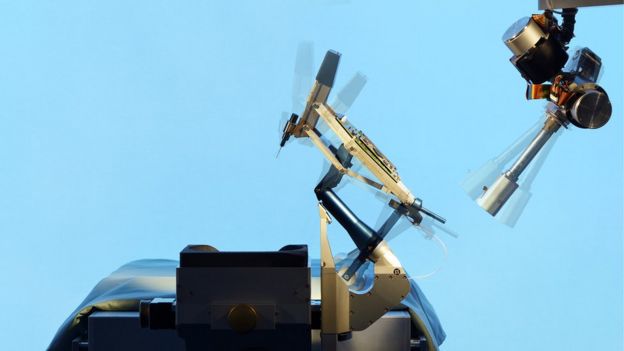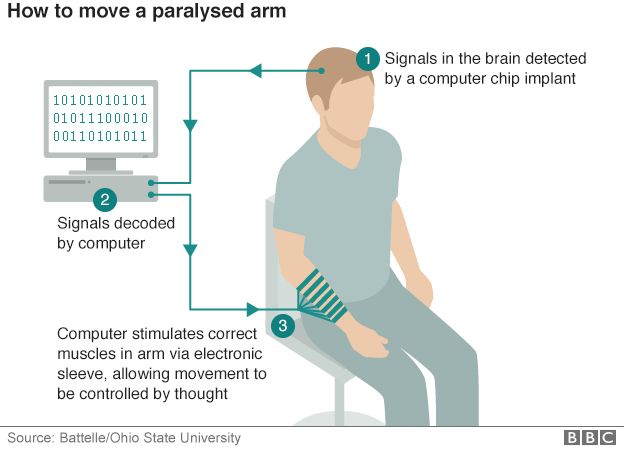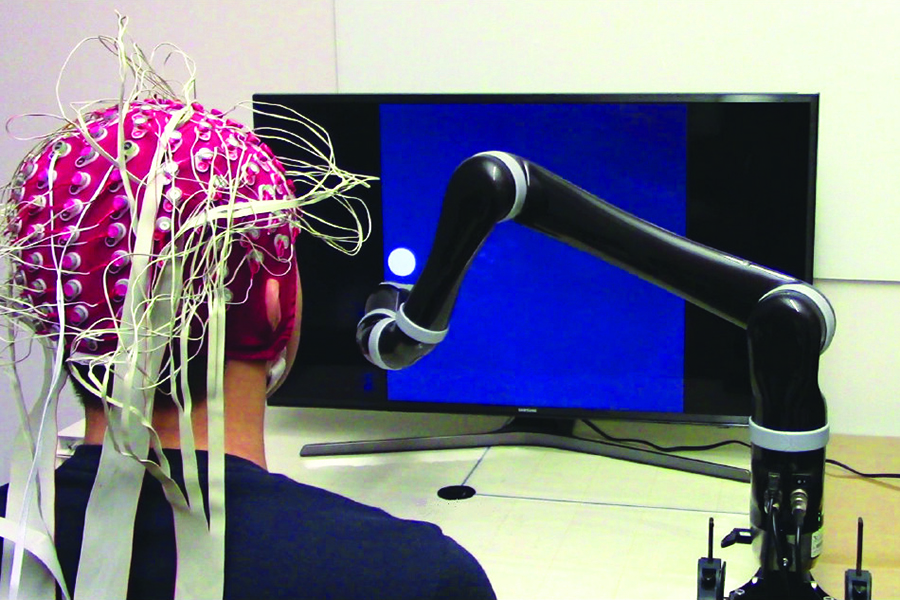World’s first robot-assisted surgery inside a human eye saves sight
Imagine slowly losing your vision. Many people assume it is like having your eyes closed or being in a dark room. But vision loss can take many forms. For Bill Beaver, 70, of Oxford, UK, it meant that his central field of vision was deteriorating, leaving only his peripheral vision intact. He described it as “looking in a hall of mirrors at a fairground.”
A membrane was covering the retina in Beaver’s left eye, causing a dark spot in the middle of his field of vision. The only option to save his sight was eye surgery to “peel” off the membrane, a very difficult process considering that the thickness of the membrane itself was less than the width of a human hair.
The thought of eye surgery can make even the most stalwart among us wince a bit. A surgeon inserts two tools into the eye through a small opening in the wall of the eye, one that provides a light source and another that surgically repairs the eye, all while peering through a microscope. Many times, the required repair is too difficult for a surgeon to attempt: Even highly trained surgeons can’t provide the precision needed for some of the most delicate of repairs.
Robotic eye surgery improves accuracy
“Current technology with laser scanners and microscopes allows us to monitor retinal diseases at the microscopic level, but the things we see are beyond the physiological limit of what the human hand can operate on,” Dr. MacLaren, Professor of Ophthalmology at the University of Oxford, told the BBC. “With a robotic system, we open up a whole new chapter of eye operations that currently cannot be performed.”
This fall, a clinical trial of robotic eye surgery was attempted. In a world’s first, a surgeon successfully completed a robot-assisted retinal surgery. A robotic system was used to operate on Beaver’s eye. According to the BBC, “A team at Oxford’s John Radcliffe Hospital used the device, controlled via a joystick, to remove a membrane one hundredth of a millimetre thick.”
Dr. MacLaren used the PRECEYES Surgical System, a robotic assistive device developed by Preceyes BV for this eye surgery. The system utilizes an inverted joystick-based system that scales, filters and translates the surgeon’s movements, providing improved control of the instrument.
The PRECEYES Surgical System builds upon research of Academic Medical Center Amsterdam and Eindhoven University of Technology, providing the accuracy necessary for extremely delicate eye surgeries.
- Device accuracy (1 – 10 µm) provides great improvement over manual accuracy (100-150 µm)
- Improves the safety and performance of existing ocular surgery
- Enables new treatments, such as high-precision, targeted drug delivery inside eye
The system is comprised of seven independently computer-controlled motors. The control software for the entire device was designed and implemented in Simulink. The model runs in Simulink Real-Time on a real-time PC for safety-critical elements of control software during the surgery.
“Simulink and Simulink Real-Time enabled controls algorithm design and implementation of these algorithms on the device,” stated Gerrit Naus, COO and co-founder at Preceyes. “The tools facilitate a straightforward approach for implementing the design whilst allowing for quick iterations.”
The motors enable the surgeon to navigate within the eye and move the instrument in 1/1000th-millimeter increments. The system filters the surgeon’s hand tremors, even those minute movements caused by the surgeon’s own heartbeat.
The PRECEYES Surgical System is also designed so that the surgeon can safely release the tool during surgery to minimize surgeon fatigue. The robotic manipulator maintains the position of the tools, allowing the surgeon to relax his hand muscles, or if need be, to resume the surgery in manual mode.
This capability is also critical for inner eye drug delivery. With needle-like surgical tools of incredibly small size, a surgeon must hold the tools perfectly still for multiple minutes in order to dispense the medicine for example inside the retina. Robot-assisted surgery could simplify that task since the doctor would navigate to the site and then the robot would maintain the position for the prolonged duration while the drug is delivered.
The future of eye-surgery
Retinal diseases are the leading cause of blindness in the developed world. According to Market Scope, an ophthalmic market research group, “Today, there are nearly 304 million individuals worldwide affected by retinal diseases of all types and stages.” This number is expected to reach nearly 343 million by 2021, yet the number of surgeons and the rate at which they can perform the surgeries are limited.
The type of eye surgery that was performed at Bill Beaver, a membrane peel, is a standard procedure that is performed over 0.5 million times each year. In manual surgery, only highly-skilled surgeons can perform these delicate procedures. Robotic assistance promises to improve the safety and performance of these procedures, allowing more surgeons to perform this surgery. Moreover, this type of robot-assisted surgery could enable new treatments, such as targeted drug delivery, allowing many more patients to have their sight saved.
Preceyes believes that this type of surgery could eventually be used outside the operating theater. Maarten Beelen, co-founder and integration manager at Preceyes said, “In the future, we could see this being used in an office-based setting, where only the robot would touch the eye and it would have a high level of automation. This would significantly improve efficiency and reduce costs.”
As for Beaver, his eyesight has greatly improved. He stated, “My sight is coming back. I am delighted that my surgery went so well and I feel honoured to be part of this pioneering research project. It’s the difference between being active… enjoying art and enjoying life.”











评论
要发表评论,请点击 此处 登录到您的 MathWorks 帐户或创建一个新帐户。